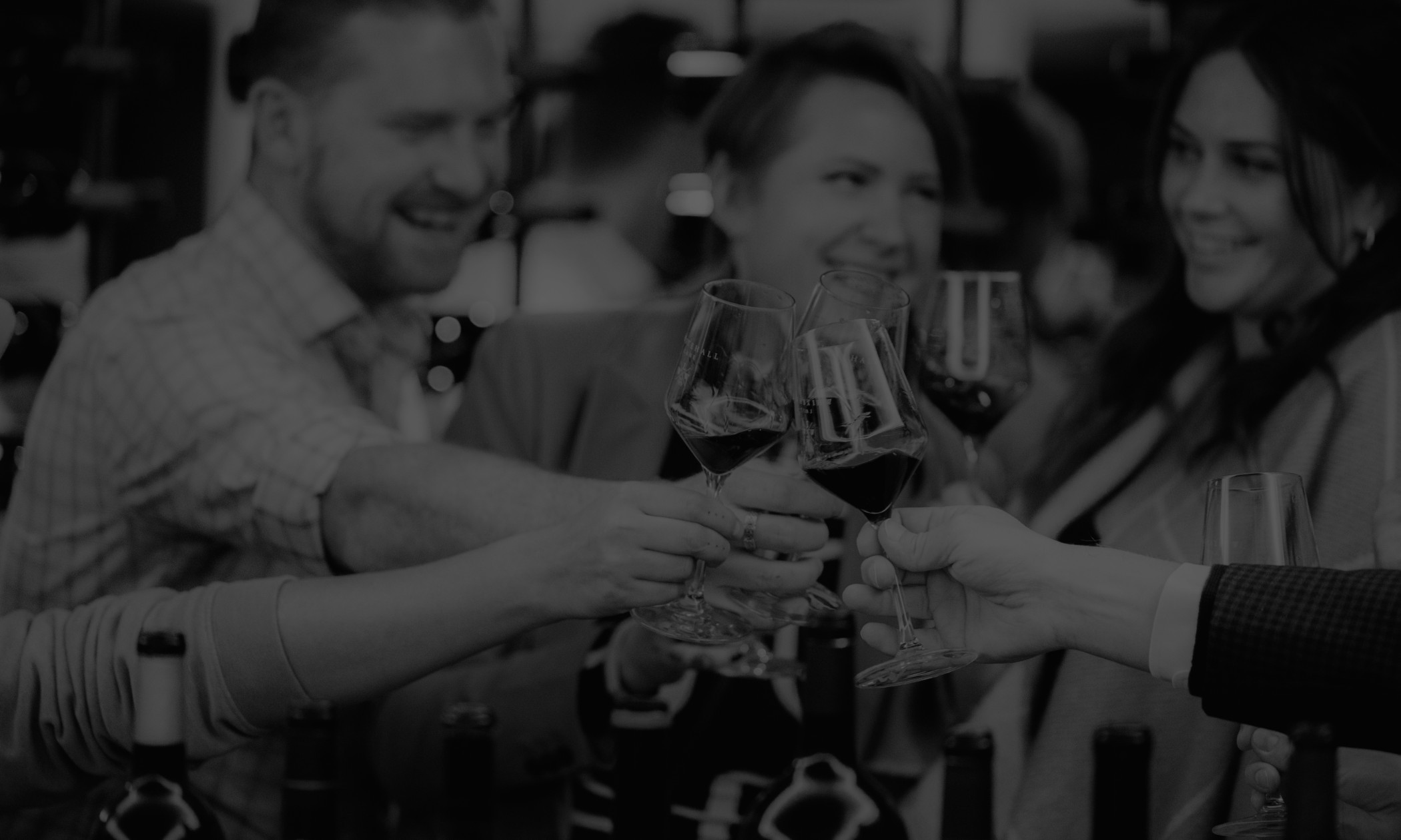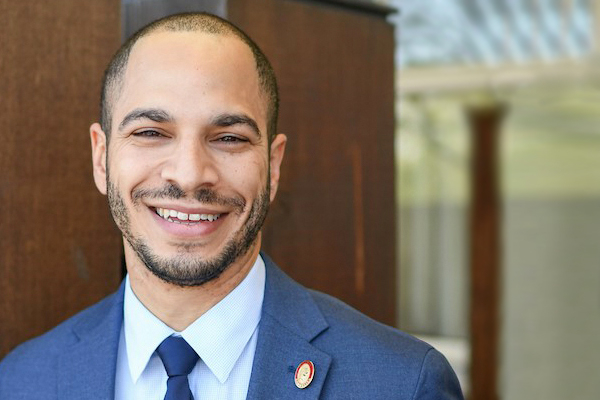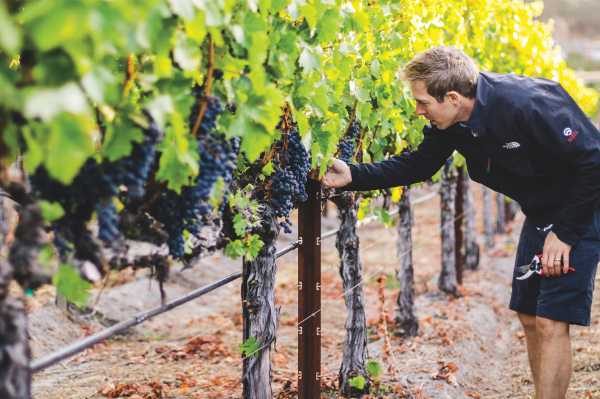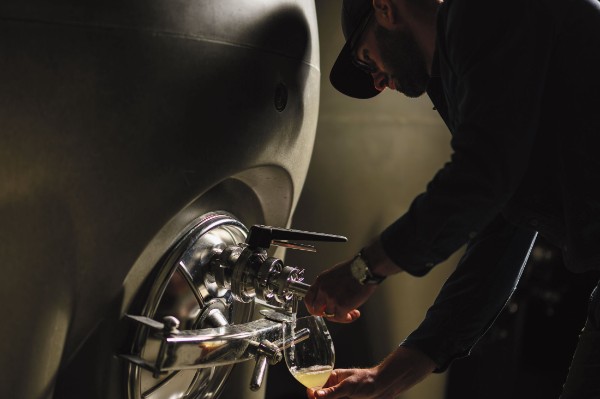Why do you love wine? Some fall for the flavors and intricate aromas. Others love wine’s transportive nature—one sip sends you from Carneros to Canada to Chile. Others love wine’s simple thrills—the pop of the cork at 5 p.m., a large pour between old friends.
Wine is—and has been for 5,000 years—a global connector. It’s a liquid trip through history, geology, chemistry, business, language and agriculture. It’s science and alchemy—a beverage that translates culture in a way that no hard seltzer ever could.
But lately, the wine world has been challenged by consumer demands and shifting perceptions. Here, Napa Valley’s vintners and winemakers remind us why wine.
ALBERTO RODRIGUEZ
Winemaker | Hyde Vineyard Estate

Alberto Rodriguez is always happy to share what he’s drinking. “That’s how I started in wine, by sharing wine with friends and cousins,” he explains. “Soon enough, we were sharing bottles and stories, trying new varieties and pairing wine with lunches and dinners.
“Now that I’m in the industry, we’re still sharing stories—winemaking processes, vintages and how Mother Nature can make life wonderful … or challenging.”
Even with vintages marked by strife, he finds wine brings people together. “The story of wine is not just the wine, it’s the people, place and how it was made,” Rodriguez continues. “How was your vintage? How did the weather affect you? There’s always something to bond over.”
CELIA WELCH
Winemaker | Barbour Wines and Keever Vineyards

“Why is wine, an ancient beverage, still relevant in today’s world?” asks celebrated winemaker Celia Welch. “As the world has become interconnected, it has become homogenized—every city in the world has a Pandora, Abercrombie or H&M. But regional wines, cheeses and cuisine cannot be replicated in other places—the ingredients are influenced by a particular combination of soil and climate.”
She takes her role interpreting what the land offers into wine very seriously.
“Wines are special because they capture a season, a vintage, and transform it into something that improves with age,” she says. “These unique flavors of place are even more precious now than ever. They deserve our respect and protection.”
JAIME ARAUJO
Owner/Founder | Trois Noix

For Napa-born-and-bred Jaime Araujo, who oversees both Accendo Cellars (founded by her parents) and Trois Noix (her own project), wine was unavoidable. Her summer jobs growing up were at Joseph Phelps Vineyards, pouring tasting flights. But it took a job in Champagne, France, to learn how unique her hometown is.
“Our terroir and geography are special, but the thing that makes Napa Valley so great is the community spirit and genuine camaraderie between the wineries and people who work there,” she says. “We actively strive to make our neighbors’ lives better. And in this day and age, the ritual of wine is a great excuse to slow down and connect.”
G.S. SAREEN
Owner | REWA Vineyards

When G.S. Sareen came of drinking age, the first beverages offered to him were hard spirits—whiskey or rum. “India is not a wine drinking country,” he says. As Sareen moved abroad, wine entered the conversation. First Australian Shiraz, then Barolo, Burgundy and finally Napa. “I found two things interesting about wine: You can stretch out the drink and really enjoy it, and it offers more sophisticated flavors—it’s like you eat the wine, not drink it.”
On a visit to Napa, he ended up stopping in a Coombsville vineyard, falling in love and decided to make the owner an offer. “When something is so distinct, like that land, it seeks you out,” says Sareen. “Mother Nature gave us grapes because we can’t eat the mud.”
REWA Vineyards is named after his wife—“The most amazing thing in my life.”
SHAWNA MILLER
Owner/Winemaker | Earthshine Wines

Sheer curiosity led Shawna Miller to apply for a harvest internship in Napa Valley after graduating in forestry from Virginia Tech. “I had never been so happy to work so hard,” she says. “I was completely blown away by the winemaking process, like how magical my first yeast inoculations smelled. It was a daily privilege to monitor tanks of world-class wines.”
She’s approaching her 20th harvest in Napa Valley, but she’s still entranced. “Wine matters to me because it is such a great connector,” she says. “Wine pushes people to check where they are, live in the moment and be present. When I host a wine dinner, there’s a click when people reach a state of flow. They forget about their phones and become 100 percent engaged in the moment of wine, food and company.”
NOVA CADAMATRE
Master of Wine and Owner/Winemaker | Fiadh Ruadh

When Nova Cadamatre’s partner, Brian, introduced her to the grapegrowing side of his family, she said to herself, how hard could it be?
She quickly realized that not only is it hard, but winemaking is “an art form, supported by science,” she says. “Wine needs life to be created—it needs vineyards, live and active yeasts and bacteria. It’s a truly natural product that speaks to where it was grown and who was involved in making it.”
“There is just so much to explore and learn,” she says. “Even as a Master of Wine, I will never know everything about wine.”
ENRIQUE HERRERO
Vineyard Manager | Inglenook

Enrique Herrero’s elders and their elders worked as winegrowers in Argentina, but he followed a different path and took a job in the fruit and vegetable processing industry.
Then came a call from Inglenook, the largest contiguous estate on Rutherford Bench. “It was like a call from my ancestors, stronger than my will.” He took it. “I felt the joy of being reconnected with my childhood and my roots, working among the vines.”
Now, his role is to care for and celebrate the 120 different viticultural areas he farms across the valley. “Napa Valley has numerous different soil series and types, and the intricate topography of the valley impacts how these diverse sets of soils express themselves,” Herrero continues. “When vines are properly cared for, the nature of a place really defines the wine.”
JEAN HOEFILGER
Winemaker | AXR Winery and JH Wine Consulting

Winemaking consultant Jean Hoefliger has decades of wildly successful wines under his belt. But failure formed the Swiss-born winemaker’s career.
He dreamed of being a lawyer, but at law school the only thing he learned was “how to drink wine and play cards,” he says with a laugh. A career in law didn’t happen, but his extracurricular activities did spark an interest in wine.
“The balance between art and science in winemaking is what drew me in,” he says. “And sure, it’s alcohol, but wine really keeps us grounded in human interactions.”
He now consults on brands around the world, but Napa Valley remains his dream terrain. “The consistent conditions allow winemakers to be proactive, not reactive, in their pursuit of excellence,” says Hoefliger. “And in a region that is only 30 miles long and five miles wide, you have 120 soil and exposure variations—a wild amount of diversity in a place that produces less than five percent of all California wines.”




